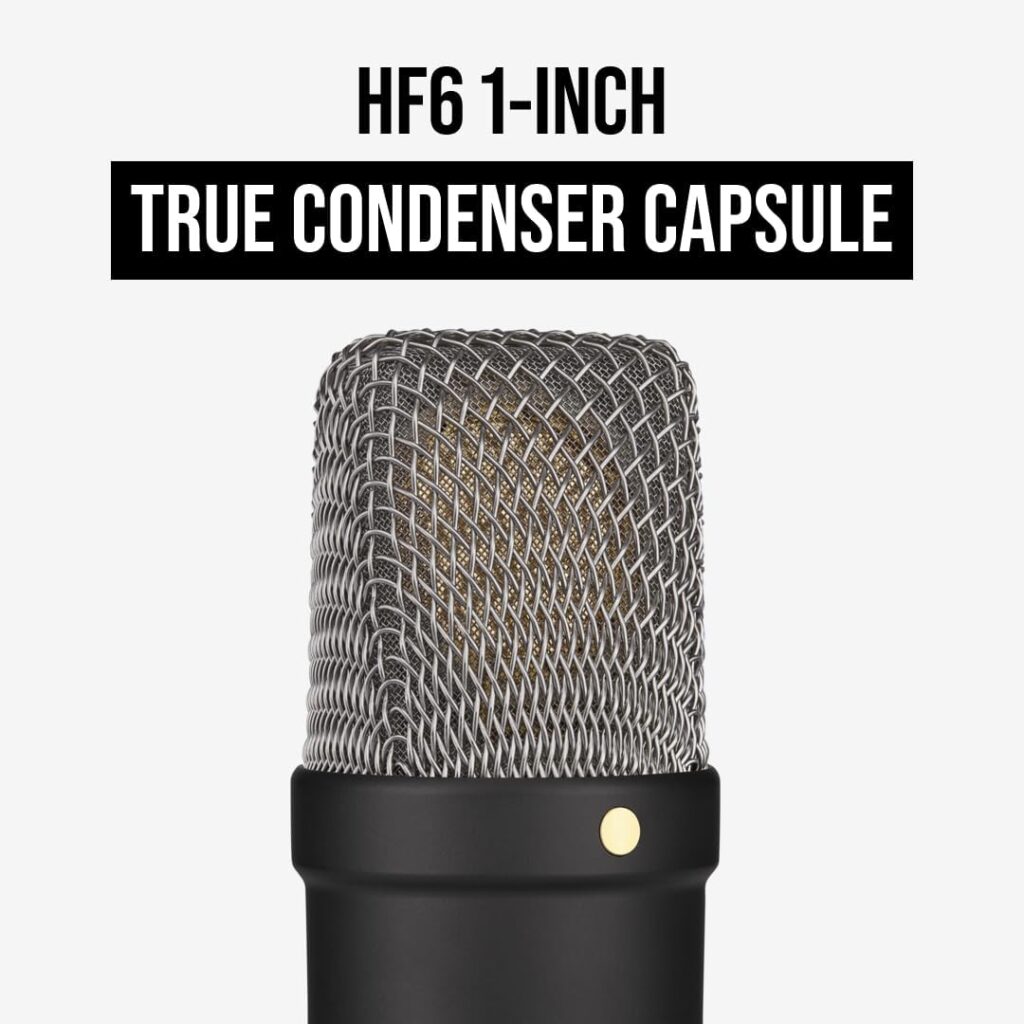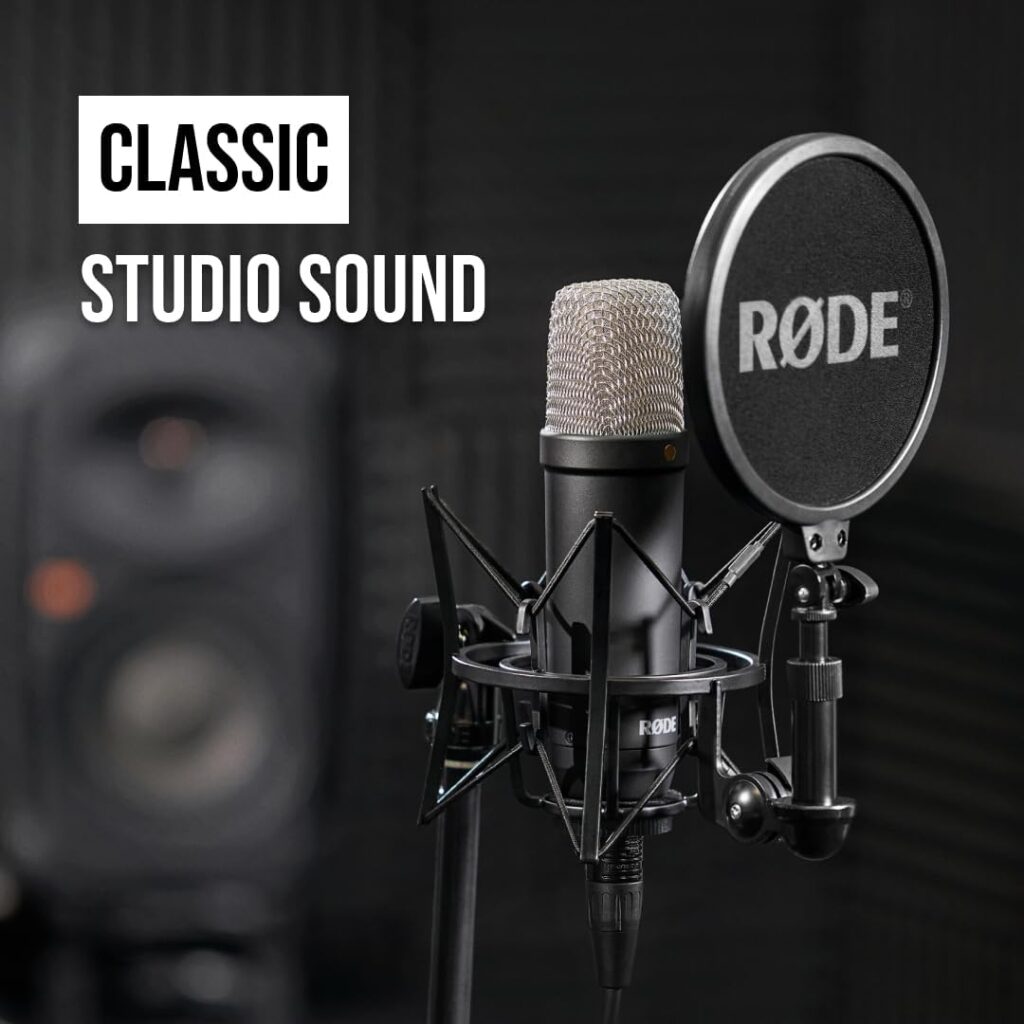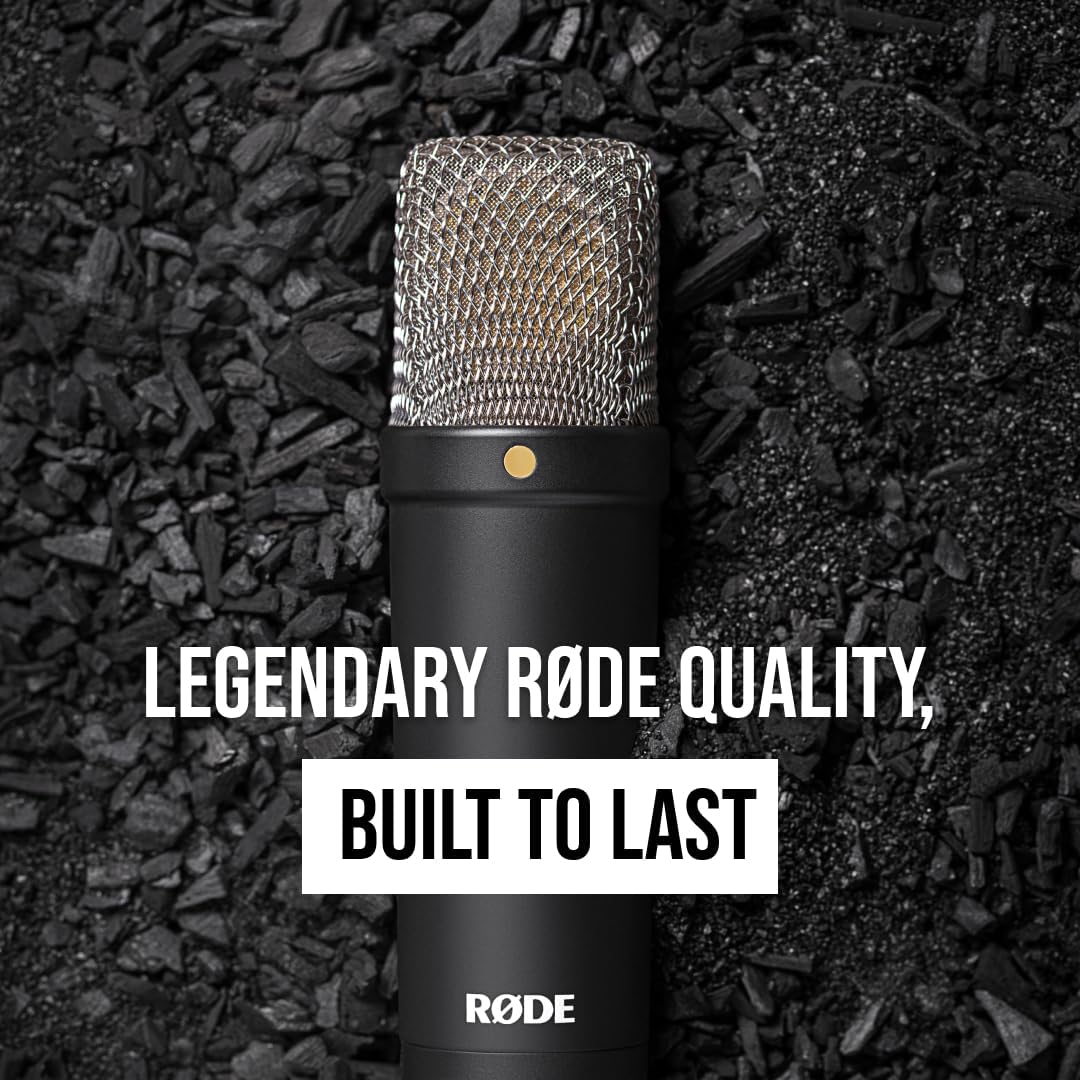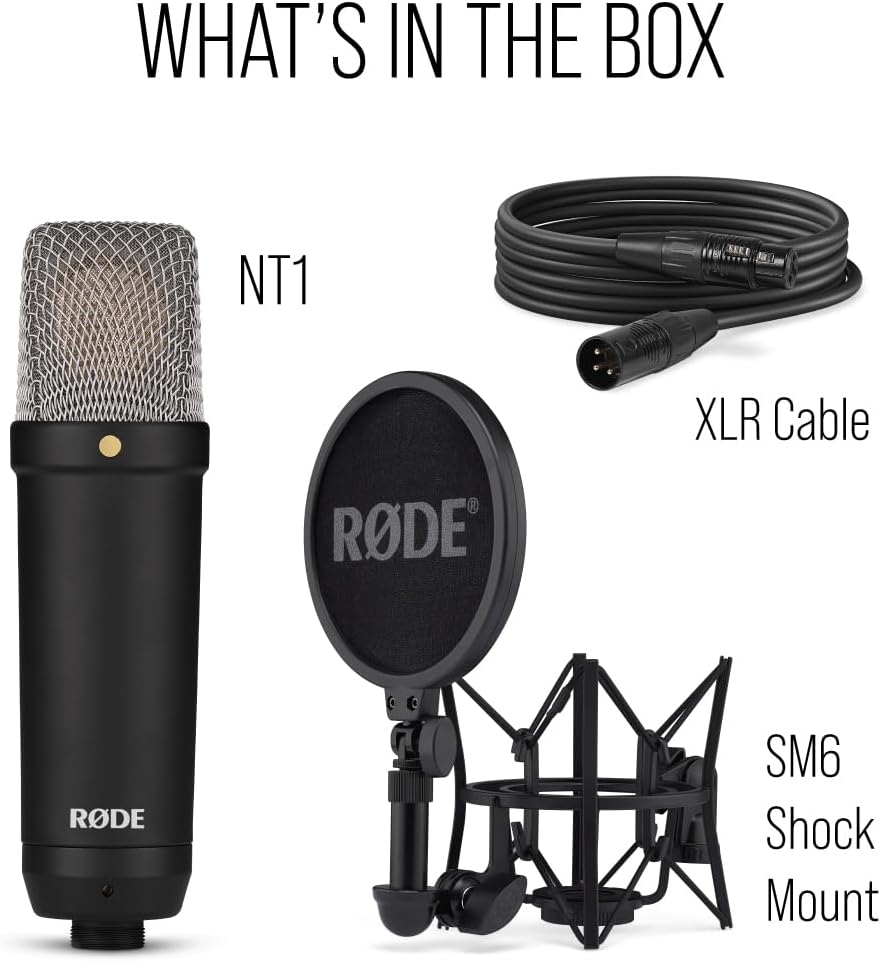Rode NT1 Review
When it comes to studio microphones, Rode has carved out a reputation for delivering high-quality, reliable gear that doesn’t break the bank. Among its lineup, the Rode NT1 stands out as a flagship large-diaphragm condenser microphone that promises professional-grade sound at a price point accessible to both beginners and seasoned audio enthusiasts. Introduced as an evolution of the popular NT1-A, the Rode NT1 has been praised for its clarity, versatility, and innovative design. But does it live up to the hype? In this review, we’ll explore the Rode NT1 in depth—its build, sound quality, features, and real-world performance—to help you decide if it’s the right mic for your recording needs.
Rode NT1 Review
Rode, an Australian company founded in 1967, first gained widespread attention with the NT1-A, a microphone celebrated for its low self-noise and bright, detailed sound. However, in 2013, Rode took a bold step by completely redesigning the NT1, keeping the name but rethinking nearly every aspect of the original. The new NT1 was marketed not as a successor to the NT1-A but as a distinct offering with a flatter frequency response and even lower noise floor. Paired with its sleek black finish and a redesigned shock mount, the NT1 signaled Rode’s ambition to compete with higher-end studio microphones while maintaining affordability.
Today, the Rode NT1 remains a go-to choice for home studios, podcasters, voiceover artists, and musicians. Priced around $269 (often bundled with accessories), it occupies a sweet spot between budget mics and premium options like the Neumann TLM 103 or AKG C414. So, what makes it so special? Let’s break it down.
Design and Build Quality

Straight out of the box, the Rode NT1 impresses with its premium feel. Unlike the silver finish of the NT1-A, the NT1 sports a matte black coating that’s both stylish and resistant to fingerprints. The body is made from solid aluminum, giving it a robust yet lightweight construction. At 440 grams (just under a pound), it’s hefty enough to feel substantial but not so heavy that it strains a mic stand.
The microphone’s cylindrical shape is sleek and minimalist, with no protruding switches or buttons—a design choice that keeps things simple and reduces the risk of accidental adjustments during recording. The grille is a fine metal mesh that protects the capsule while allowing sound to pass through cleanly. Rode claims the grille is nickel-plated for durability, and after months of use, it shows no signs of wear or tarnish.
One standout feature is the included SMR shock mount, which is a significant upgrade over the basic mounts bundled with many microphones in this price range. The SMR (Superior Microphone Mount) combines a dual-Lyre suspension system with a removable pop filter. The Lyre design, borrowed from Rycote’s acclaimed suspension technology, effectively isolates the mic from vibrations and handling noise. The pop filter snaps on and off easily, making it convenient for vocal recording while still allowing flexibility for other applications like instrument miking. The shock mount feels sturdy and adjusts smoothly, though it’s worth noting that it’s designed specifically for the NT1’s dimensions, so it’s not interchangeable with other mics.
The NT1 also comes with a dust cover—a small but thoughtful addition for keeping the mic clean during storage. While the package doesn’t include a carrying case, the microphone, shock mount, and a short XLR cable (in some bundles) are all you need to get started. Overall, the build quality feels like a step above what you’d expect for the price, exuding confidence that the NT1 can withstand years of regular use.
Technical Specifications
The Rode NT1 is a large-diaphragm condenser microphone with a cardioid polar pattern, meaning it captures sound primarily from the front while rejecting noise from the sides and rear. This makes it ideal for solo recording in untreated rooms, though it’s not as versatile as multi-pattern mics for complex setups. Its 1-inch capsule is internally shock-mounted, further reducing mechanical noise—a feature typically reserved for pricier models.
One of the NT1’s headline specs is its self-noise level, rated at an astonishingly low 4.5 dBA. To put that in perspective, most budget condensers hover around 15-20 dBA, and even the revered NT1-A clocks in at 5 dBA. This near-silent operation means the NT1 picks up every nuance of your voice or instrument without adding audible hiss, a critical advantage for quiet sources like acoustic guitar or whispered vocals.
The frequency response spans 20 Hz to 20 kHz, covering the full range of human hearing. Unlike the NT1-A, which had a pronounced high-end boost, the NT1’s response is remarkably flat, with only a subtle lift around 10 kHz for a touch of airiness. This neutrality makes it a blank canvas for EQ and processing, appealing to engineers who prefer to shape the sound in post-production. The mic can handle a maximum SPL (sound pressure level) of 132 dB, so it’s capable of recording loud sources like drums or amplifiers without distortion, though it lacks a pad switch for even louder scenarios.
The NT1 requires 48V phantom power, standard for condenser mics, and connects via a 3-pin XLR output. There are no onboard controls like high-pass filters or attenuation pads, keeping the signal path clean and uncluttered. While some might miss these features, their absence aligns with the mic’s minimalist ethos—Rode clearly wants you to rely on your preamp or interface for adjustments.
Sound Quality
The true test of any microphone is how it sounds, and the Rode NT1 delivers in spades. Its defining characteristic is clarity. Whether recording vocals, acoustic instruments, or even ambient sounds, the NT1 captures detail with a natural, uncolored tone. Compared to the NT1-A, which could sound overly bright or sibilant on some voices, the NT1 feels smoother and more balanced. That slight high-frequency lift adds presence without harshness, making it flattering for a wide range of sources.
For vocals, the NT1 excels at reproducing texture and articulation. Testing it with a mid-range male voice, the mic picked up every breath and consonant without exaggeration, while the low end remained tight and controlled. Female vocals sounded equally impressive, with a silky quality that avoided the brittleness sometimes heard in budget condensers. The cardioid pattern does a solid job of rejecting room noise, though in reflective spaces, a little acoustic treatment goes a long way.
When used on acoustic guitar, the NT1 revealed its versatility. Positioned about 6 inches from the 12th fret, it captured the instrument’s warmth and string detail beautifully, with a natural decay that didn’t require much EQ tweaking. Switching to a dynamic source like an electric guitar amp, the mic handled moderate volume levels with ease, though for screaming stacks, you might need a dynamic mic or an external pad.
Podcasters and voiceover artists will appreciate the NT1’s low noise floor. In a quiet room, recordings are pristine, with no discernible hiss even at high gain settings. Pair it with a decent preamp (like those in the Focusrite Scarlett series), and you’ve got a setup that rivals professional studios. The included pop filter tames plosives effectively, though for close-up narration, a slight angle off-axis can further smooth out “p” and “b” sounds.
Real-World Performance
To get a fuller picture, I put the NT1 through a variety of scenarios over several weeks. For a podcast episode, it delivered crisp, broadcast-ready audio with minimal post-processing—just a touch of compression and a high-pass filter to roll off room rumble. Recording a singer-songwriter demo, the mic shone on both vocals and guitar overdubs, blending them seamlessly in the mix. Even in a less-than-ideal basement studio with some background hum, the NT1’s directionality kept the focus on the source.
One minor critique is its sensitivity. While the low self-noise is a blessing, the NT1 can pick up faint environmental sounds—like a chair creak or distant traffic—if you’re not careful. This isn’t a flaw unique to the NT1 (it’s inherent to condensers), but it’s something to consider if your recording space isn’t well-isolated.
Compared to competitors, the NT1 holds its own. Against the Audio-Technica AT2035 (a popular alternative around $150), the Rode offers superior noise performance and a more refined top end. Stepping up to the $400 range, the Warm Audio WA-47jr is warmer but less transparent, while the NT1’s neutrality makes it more adaptable. High-end mics like the Neumann U87 outclass it in depth and character, but at over ten times the price, that’s hardly a fair fight.
Pros and Cons
Pros:
- Exceptionally low self-noise (4.5 dBA)
- Clear, neutral sound with subtle presence boost
- Premium build quality and excellent shock mount
- Affordable for its performance tier
- Versatile for vocals, instruments, and spoken word
Cons:
- No onboard pad or filter switches
- Sensitive to room noise in untreated spaces
- Cardioid-only pattern limits flexibility
Who Should Buy the Rode NT1?
The Rode NT1 is a fantastic choice for anyone building a home studio on a budget or upgrading from an entry-level mic. Its combination of low noise, natural sound, and sturdy construction makes it ideal for podcasters, YouTubers, voiceover artists, and musicians recording vocals or acoustic instruments. If you value transparency over coloration and don’t need multi-pattern functionality, the NT1 is hard to beat.
However, it might not suit everyone. Engineers working with extremely loud sources might miss a pad switch, and those needing a mic for stereo or room recording will want a multi-pattern option. For purists chasing vintage warmth, a tube mic might be a better fit—though at a much higher cost.
The Bottom Line
The Rode NT1 isn’t just a microphone; it’s a statement. By blending cutting-edge engineering with practical design, Rode has created a tool that punches well above its weight. It’s not perfect—few mics are—but for under $300, it offers performance that rivals options twice its price. Whether you’re laying down your first track or refining a professional workflow, the NT1 deserves a spot on your shortlist. In a crowded market, it stands tall as a reliable, versatile, and downright impressive piece of gear.




